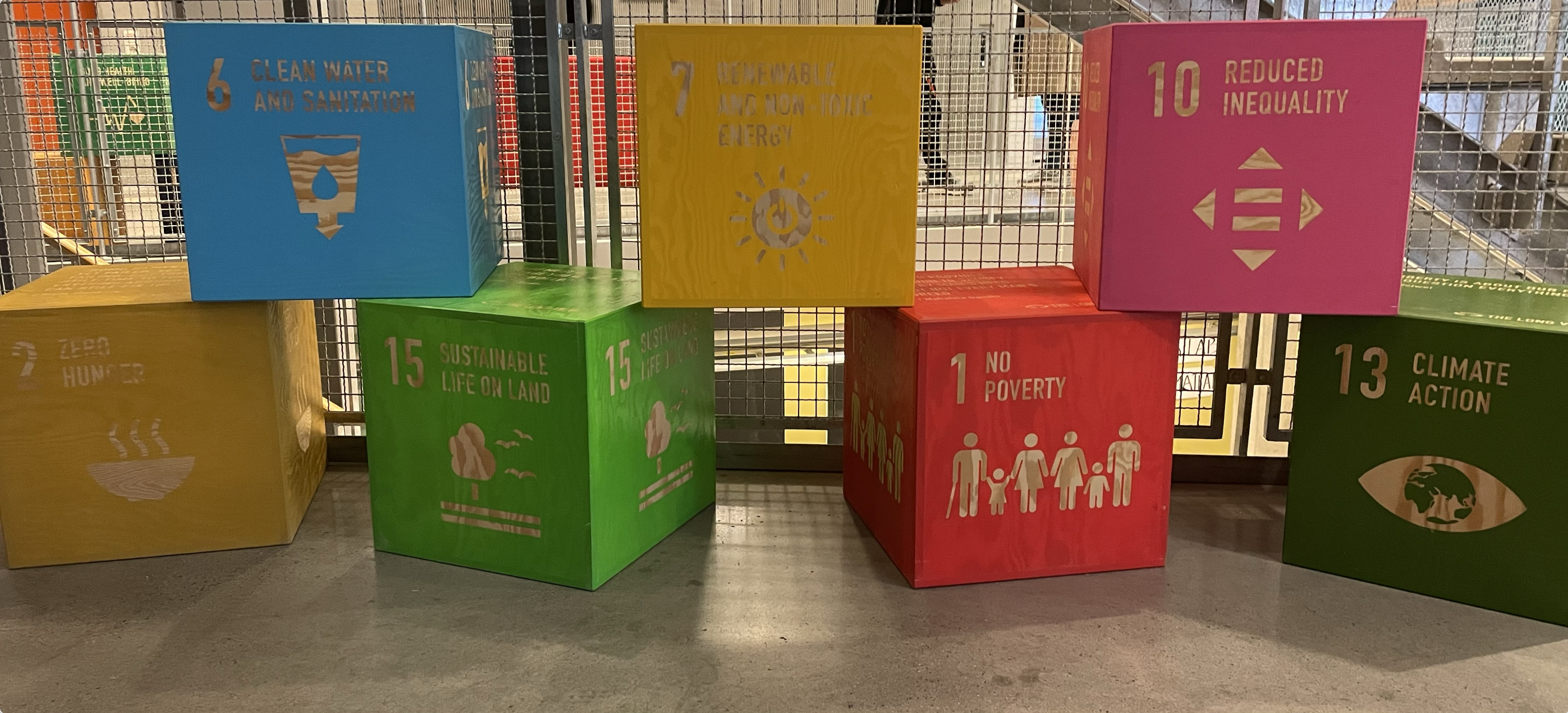
Currently reading: Inspiring Action, Efficacy, and Connection: Weaving Sustainability into Environmental Science Curriculum through a Connected Learning Model (Bertossi & Halliwell, 2020)
Yesterday, in our “collegial project course: teaching sustainability”, I showed two models of how one might approach thinking about teaching sustainability, and here is another one that I quite like, from the article
Inspiring Action, Efficacy, and Connection: Weaving Sustainability into Environmental Science Curriculum through a Connected Learning Model (Bertossi & Halliwell, 2020)
Connected learning — in the case of this article, bringing sustainability topics into environmental science classes — can have many benefits, both for teaching of the original “normal” STEM topic, and for including sustainability in more courses that might not otherwise have included it, thus giving the topic more space and perceived importance. Connected learning can also be used to work towards learning outcomes like systems thinking and interdisciplinary work in “normal” STEM classes that might otherwise not address them. It can also help students, especially those that don’t have a lot of confidence in their scientific abilities, find their agency and helping their grow their confidence in being able to make a difference to something larger than themselves, by giving students choice to focus on personal relevance and passion for the work they do. Also students connect to their network outside of the classroom in a meaningful way and learn from it in new and unexpected ways.
Connected Learning relies on 6 design principles:
- Interest powered: Students have choice of topics (within a given range of what is relevant to the course, of course)
- Peer supported: Collaboration is built into the work, for example by working in groups, giving peer feedback, but also having external connections built into the project (sharing with friends and family, maybe even in specific roles, e.g. as “critical friends”)
- Academically oriented: Making sure that the projects are anchored in the curriculum and that there is space to reflect on how what they are doing relates — and contributes — to the discipline
- Shared purpose: Students don’t keep their projects within the course, but find cooperation and support in their community, where they also contribute to a bigger goal outside of the course
- Production centred: Students come out with concrete outcomes like a letter to important stakeholders with relevant information compiled for them, or action plans for how to implement change
- Openly networked: This is again about not keeping the project and learning within the course, but making their insights and outputs accessible to other interested parties
The article compares two cases where connected learning principles were used in teaching, and explores how they can contribute to science literacy on the one hand, but also how they encourage community action. It includes a table with the 6 design principles and how they were interpreted for those two specific courses (check it out, it’s really helpful to understand better what this could look like). Looking through this, I think my course on “teaching sustainability” might actually match all 6 design principles! :)
One thought that I had, triggered by the way it is described that students will put more time into a course because it’s now personally relevant, is to what extent we can expect this. I know that all my #WaveWatching work is about hijacking students’ thoughts when they are out in the world, but maybe we need to be careful about not introducing a bias here where some students do have the space to think about the meaningful projects all day outside of university, whereas others (no matter how relevant the project and how much they would like to think about it) just cannot do it, be it because of caring responsibilities, fatigue, or any other reason. Are we excluding students from the experience by assuming that they’ll be so excited that they will put in more work, when for some students that might just not be possible? So how will we deal with students that might have to work on a smaller project than what they (and we) might have liked? No answer here just yet… Any suggestions?
Bertossi, T. A., & Halliwell, P. (2020). Inspiring Action, Efficacy, and Connection: Weaving Sustainability into Environmental Science Curriculum through a Connected Learning Model. Journal of Sustainability Education, 24. [link to pdf]
Teresa Ann Bertossi says:
Thanks for reading our article. I am curious if you had success utilizing the connected learning model in your course work and if you developed the thinking any further about students who can’t commit time for larger passion-based projects. I would add that sometimes it takes a while to identify what one is passionate about as well and I know many of my students started projects they thought they were passionate about and learned otherwise ;)